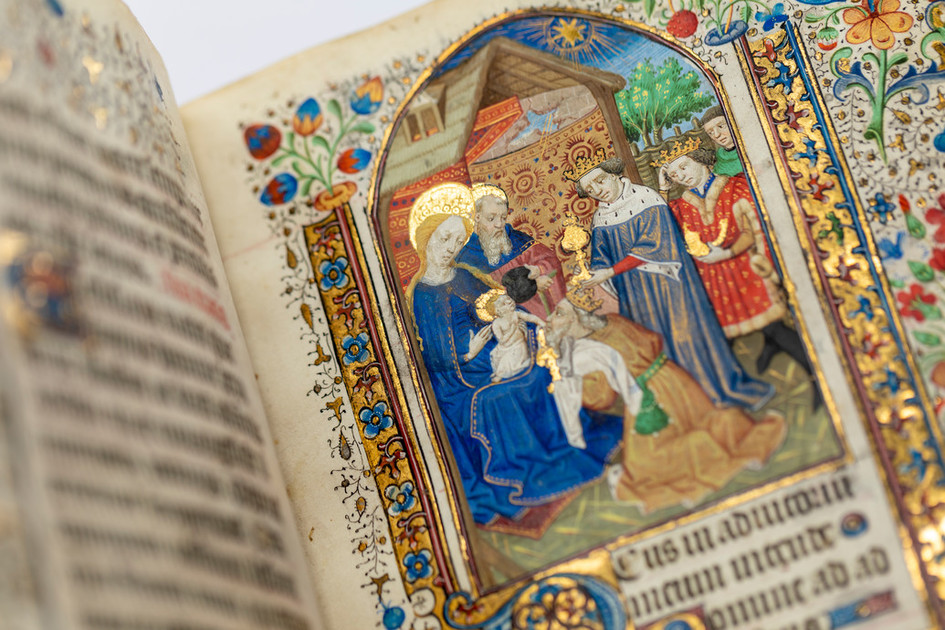Treasures
of special collections
The Special Collections contain a wealth of rare and interesting items. This page highlights the variety of our rare book and archive holdings.

Book of Hours, Paris. (c. 1420)
A Book of Hours is a personalised prayer book of Christian devotion which was popular in the Middle Ages. This stunning Book of Hours was donated to Special Collections in the early 1980s, by Dr. Nellie B. Eales, Senior Lecturer of Zoology at the University of Reading.
Inside the volume are 185 leaves of intricately written script, elaborately decorated in blue, red and gold, with borders in an ivy-leaf design. Also included are other flowers such as columbines, wild strawberries and bluebells.
Eales’ notes (inside the cover) reveal how she went to great lengths to identify the wild flowers and Saint’s depicted in the illustrations.
Find out more about this item.
Credit line - MS 2087

Bloch, Ichthyologie (1796)
This publication by the German ichthyologist Marcus Elieser Bloch (1723-99) has been described as one of the finest illustrated works on fish ever to be published.
Credit line - COLE--394 Vol. 1-6

Crescentius, Ruralia commoda (1471)
Our oldest printed book.
Petrus de Crescentius (1230-1321) described himself as a citizen of Bologna, who in his youth spent all his time reading logic, medicine and natural science, and later devoted himself to the noble science of law.
The text is said by some to have been the most important original medieval work on agriculture, husbandry and horticulture.

Frederick de Wit’s Atlas (1700)
Frederick de Wit was a prolific and skilled map engraver, publisher and seller who became one of the largest publishers in Amsterdam by the end of the seventeenth century. His work included a wide range of cartographic publications, including sea and world atlases, wall maps and ‘town books’, which contained plans and views of Dutch and other European towns and cities.
This copy (c. 1700) is part of a worldwide series, with 155 hand-coloured maps.
Credit line - RESERVE LARGE FOLIO--131

Huntley & Palmers
The name Huntley & Palmers is inextricably linked with Reading, as for a large part of the 19th, and then well into the 20th century, it was the largest biscuit manufacturer in the world. The town is lucky enough to have retained a large archive of material, and the University of Reading holds the majority of the paper records that survive.
Credit line - MS 1490 / HP

Estienne, La dissection (1546)
Charles Estienne’s La dissection des parties du corps humain is one of the great illustrated anatomical works of the sixteenth century.
It is a fine example of the accomplishments and innovations of the Parisian printing houses of this period. The full-page woodcuts have fascinated readers to this day.
Credit line - COLE--X092F/02